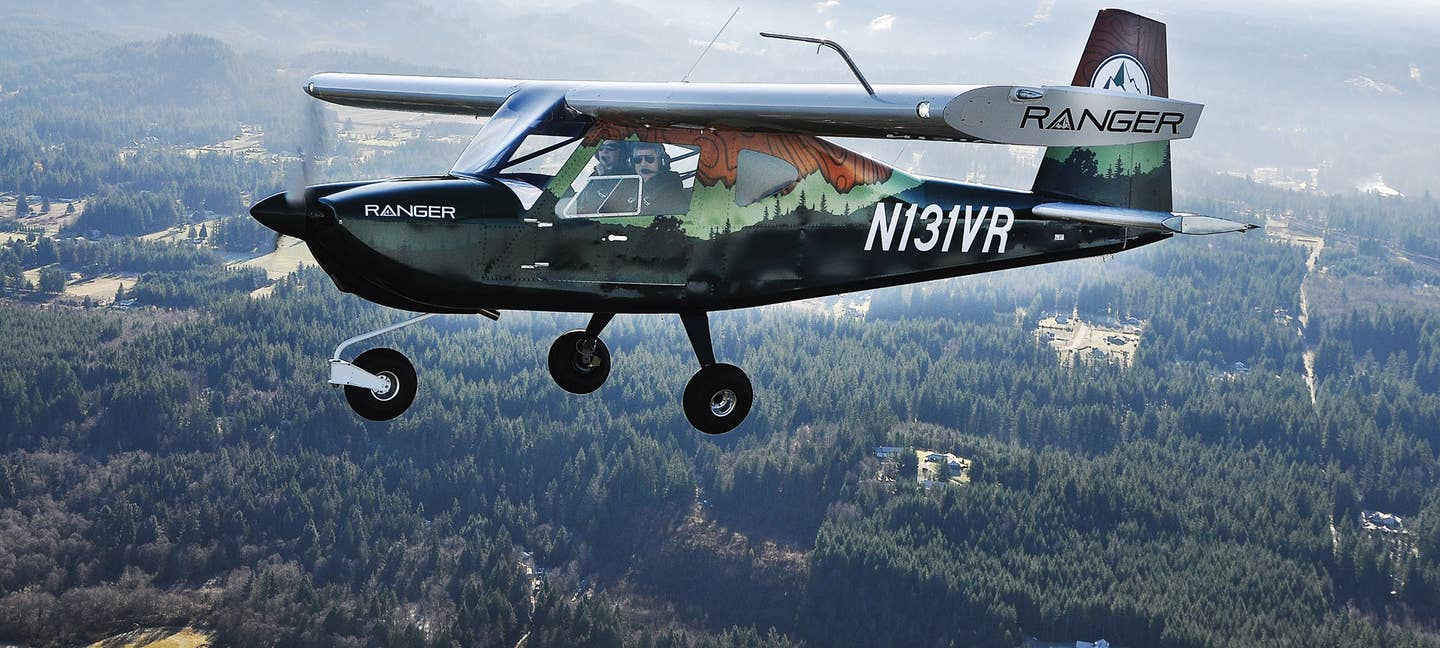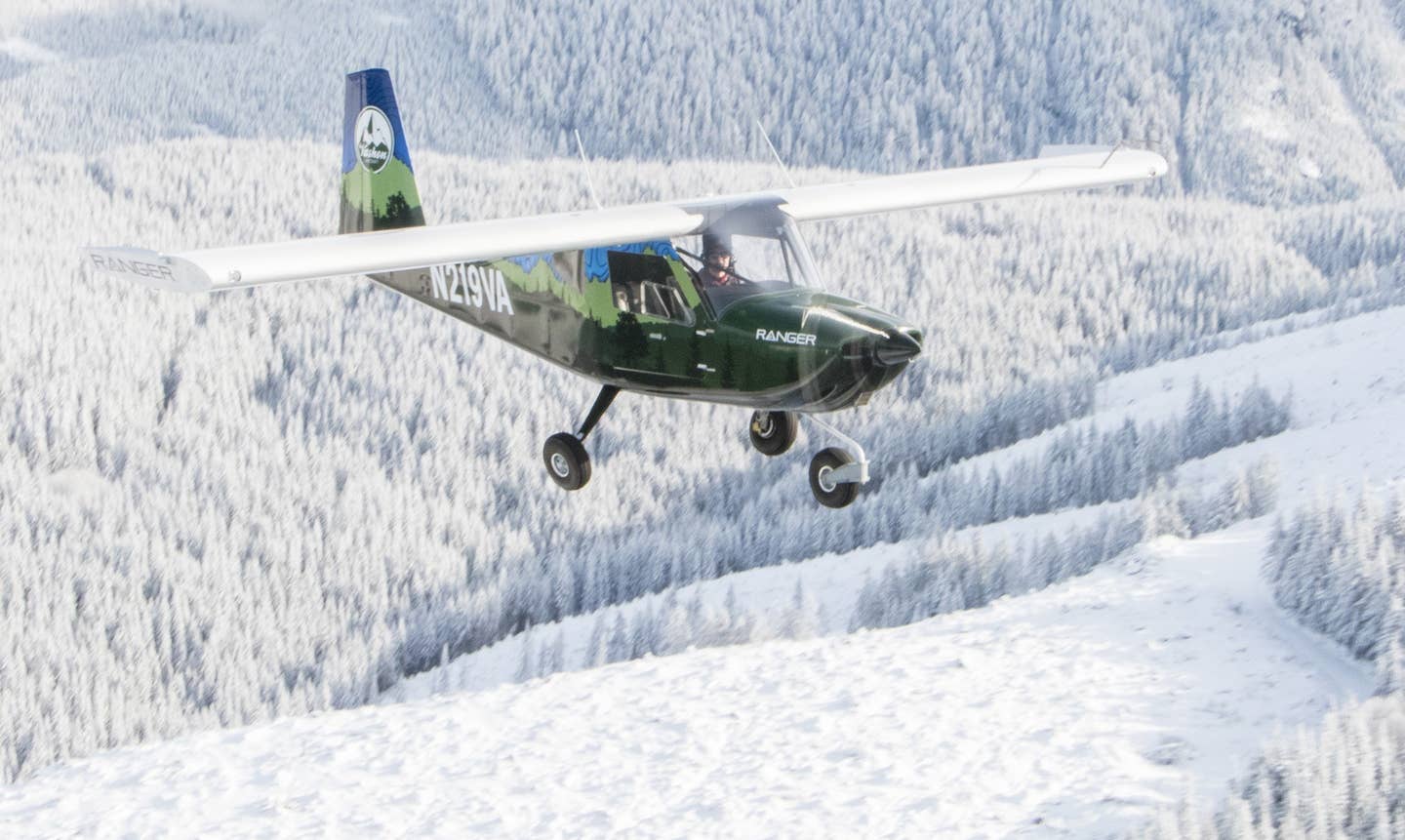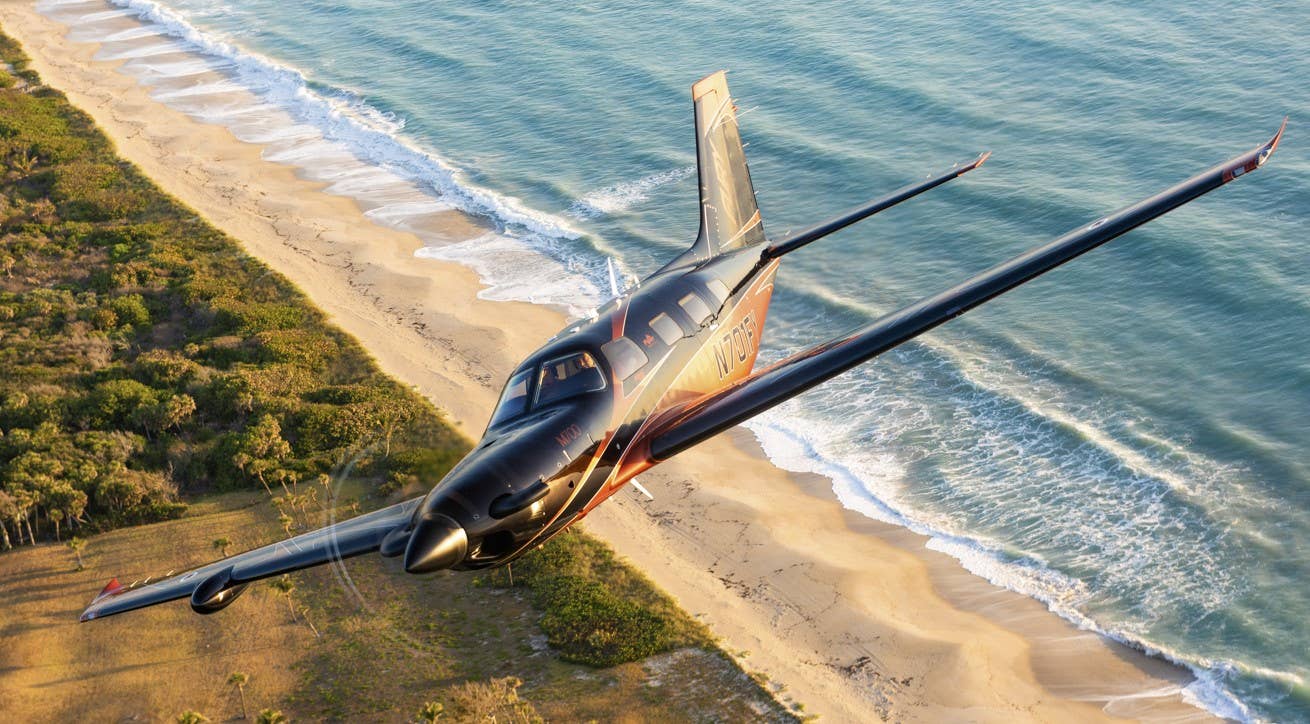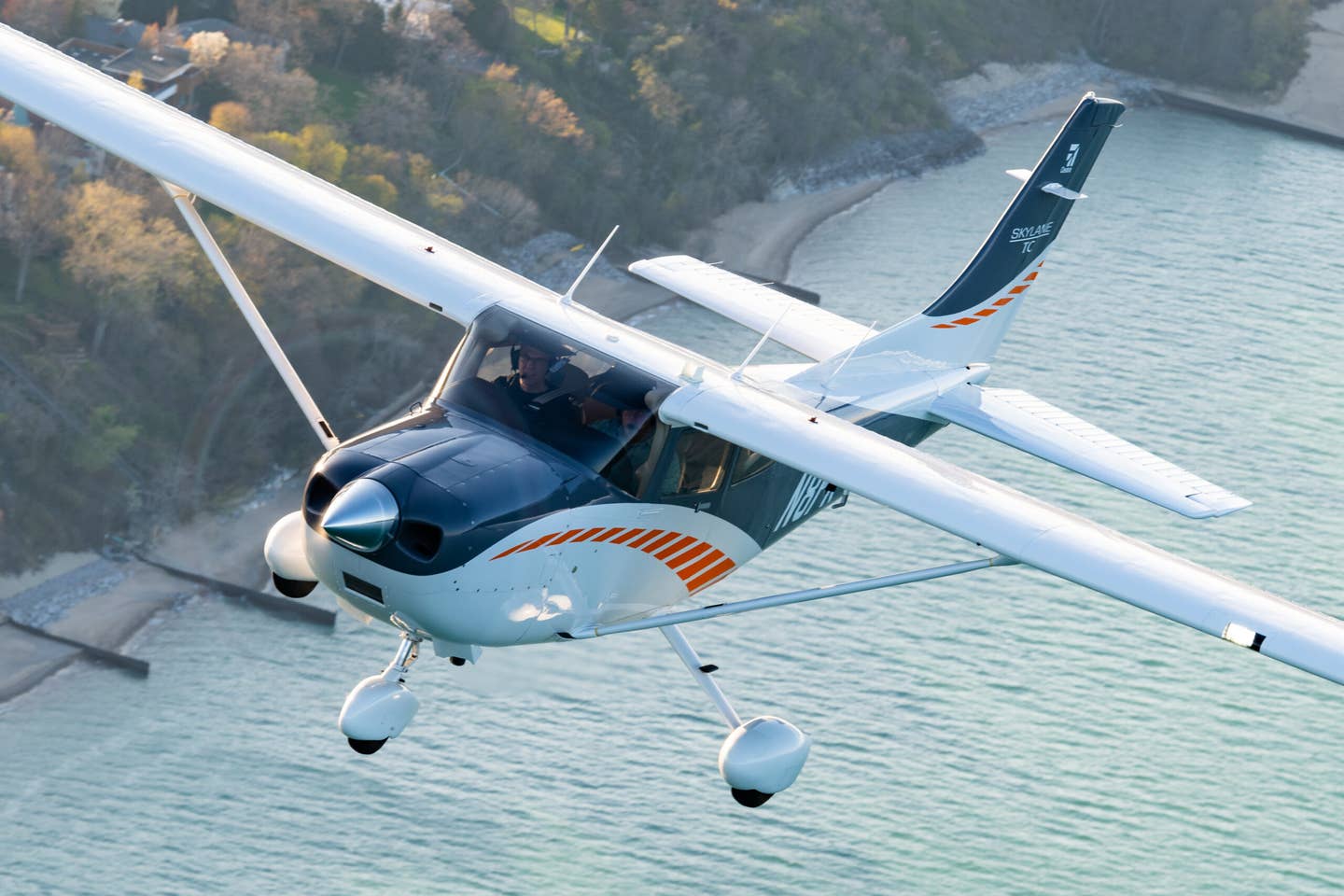Meet the Jeep of Light-Sport Aircraft
The Vashon Ranger R7 made a surprise entrance after an unusual rollout strategy.

[Courtesy: Vashon Aircraft]
When the light-sport aircraft rules were released in 2004, the aviation industry was excited about the prospect of brand-new airplanes becoming more affordable. With the cost and complexity of Part 23 certification and the introduction of advanced cockpit technologies, factory-new certified airplanes were outside the budget of many pilots. The LSA category was expected to breathe new life into the declining industry, making flight training and flying for fun more affordable. LSAs were expected to go out the door for around $100,000 apiece. Many airplane manufacturers envisioned a return to general aviation’s glory days, when airplanes were pushed out of the factories by the thousands, as they were from the 1950s through the 1970s. From well-established giants like Cessna and Piper to budding plane-makers near and far, companies tried their hand at building airplanes to successfully fit the new category.
But designing a safe airplane for $100,000 or less within the LSA restrictions, particularly the 1,320-pound takeoff weight limit, has proved more challenging than originally thought. With more than 100 different LSA models introduced, no company has succeeded in achieving mass production at the targeted price point. Cessna and Piper have dropped out of the market completely. The cost of some LSAs, such as the Icon A5 light-sport amphibian at almost $400,000, has even surpassed that of larger Part 23-certified airplanes.
Enter Vashon Aircraft — a company named after a small island in the Puget Sound region of Washington state, off the coast of Seattle’s sprawling metropolis. The company’s first airplane, the Ranger, was the light-sport industry’s best-kept secret. With a base price tag just below $100,000, the high-wing Continental-powered Ranger R7 LSA, which features the latest in glass-panel technology, could just make the dream of the affordable LSA a reality.
Where Did the Ranger Come From?
Whether LSA or Part 23 certified, most airplanes are announced in the infancy of design, then companies acquire funding by taking deposits on models that might be delivered a decade later. But Vashon did not announce the Ranger until it had built several airplanes in 2018. By the time EAA hosted AirVenture in Oshkosh, Wisconsin, in July of that year, there were five airplanes ready for delivery to customers, says Vashon general manager Scott Taylor.
How is this possible? Vashon Aircraft’s founder, John Torode, is a brilliant serial entrepreneur who made most of his fortune from a highly successful semiconductor company, which was formerly housed in the same building in Woodinville, Washington, that now serves as Vashon’s headquarters. After that successful venture, Torode, who grew up flying light airplanes, turned his focus to making avionics more affordable. He founded Dynon Avionics in 2000 and launched the successful EFIS-D-10 in 2003. The company then expanded its product line with a variety of electronic-panel solutions for experimental and light-sport aircraft. With affordability its hallmark and a reputation for delivering on its promises, Dynon grew exponentially. Today, more than 20,000 aircraft fly with Dynon products, and the company is homing in on the even larger certified-avionics market.
Vashon's Production Plant
At the Woodinville factory, colocated with Dynon in an industrial park, Vashon produces structural components and puts fuselages and wings together. The parts are then transported to a hangar at the Paine Field Airport (KPAE) in Everett, where final assembly takes place down the street from Boeing’s massive facility.
With the limits of LSA, weight is a major production consideration. Paint comes with a great weight penalty, so Vashon turned to a local vinyl-wrap supplier, Wicked Wraps. In addition to being lighter, the wrap allows for cool designs to be applied to the fuselage that would be cost prohibitive if done in paint. Vashon chose a nature design inspired by the beauty of the local area, with its imposing volcanic peaks and the densely forested grounds fed by the Pacific Northwest’s incessant rains.
Despite being light, the Ranger is the Jeep of the LSA category. It is a boxy, brawny metal beast with plenty of space and beefy landing gear, strong enough for the rigors of the training environment. Unlike most LSAs, which have small wheels to keep the weight low, the Ranger has 6.00-6-size wheels and tires — the same as most Part 23-certified singles. “We’ve intentionally set it up for abuse,” says Taylor. “Especially in the pattern, it’s the easiest airplane you can fly,” something flight schools would appreciate, he added.
Flying the Ranger
January is not the ideal time to visit the Pacific Northwest. The area is generally plagued with raw weather — overcast skies, rain and sometimes snow even down at sea level. Nonetheless, I managed to score a day when I could fly the Ranger, albeit under overcast skies.
At Paine Field, I met my demo pilot, Ken Krueger, who spent many years designing airplanes for Van’s Aircraft and is also Vashon’s design engineer. With about 18 gallons of fuel in the tanks, Krueger and I were below the weight restriction, and could have flown for about three hours with a VFR reserve because the 100 hp Continental O-200 only burns about 5.5 gph in economy cruise. The max fuel capacity is 27½ gallons, so a lone pilot, or one with a child, could conceivably fly for nearly 4½ hours with reserves.
The Ranger I flew, the third prototype and first conforming model — Serial Number 1 — comes fully loaded and has an empty weight of 882 pounds. The published empty weight is 875 pounds, which this airplane would have easily stayed below without the optional autopilot and second SkyView screen — proof the company delivers as published or better. Taylor hopes to bring the empty weight down to 860 pounds or lower.
Climbing into the Ranger is slightly challenging. The right leg has to find its way to the other side of the stick, which curves its way from the floor to just above the seat. The rudders adjust, but must be locked with a pin. It would be impossible to adjust once in the seat, so Krueger helped me get set up. Despite the slight increase in weight, Vashon chose a five-point seat-belt system for extra safety.
Once configured and all buckled in, I noticed the exceptional size of the cabin. The width of the cockpit is nearly 47 inches, about 7 inches wider than the Cessna 172 Skyhawk’s. The popular Flight Design CT LSA still beats it, with 49 inches at its widest point, but the Ranger’s cabin is squarer than the CT’s, so the total cabin volume is greater. As such, there is plenty of elbow and shoulder room, and Krueger, who is well over 6 feet tall, had headroom to spare. Additionally, there is massive space behind the seats, which can hold up to 100 pounds as long as you stay below the total weight limit and within the center-of-gravity envelope.
The seats fold nearly flat, providing plenty of space to take a nap in the back. Having once been forced to spend a night inside an airplane during a rainstorm, I think this is a great feature.
The oversize windows provide excellent visibility, with a large section on each side that opens up for fresh air or a camera lens. There is no speed limit for keeping the windows open.
I’m not a big fan of the Rotax’s high-rpm buzz, which has become the standard for LSAs, so starting up the 100 hp Continental O-200 engine was a pleasure. The start-up also gave me the first look at Dynon’s SkyView HDX. With terrific resolution, the 10-inch screen is fully touch-capable, yet there are buttons in the frame, providing multiple ways to manipulate the technology. The frame also has a ledge at the bottom to help stabilize the fingers while pushing the buttons or screen in flight. I had very little past experience with any Dynon product, and none with the company’s touchscreens, but I found the system intuitive right off the bat.
Taxiing the Ranger was easy because the castering nosewheel allowed for tight turns. The takeoff was equally comfortable, and the airplane settled right into a steady climb. The rate of climb was still 600 fpm through 6,500 feet, while sipping 7.3 gph, as we climbed our way up to 7,500 feet, where we settled in at 118 ktas, burning 6.4 gph at max cruise.
Most LSAs I have flown have been a bit squirrely, to be honest. But Vashon has succeeded in designing a stable, light airplane. It felt like a heavier platform — a lot more like a Cessna 172 than a 152. Pushrods connect the ailerons and elevator to the stick, cables control the rudder and the trio plays harmoniously together.
However, the stick design didn’t give me the ideal position with which to fly. When resting my arm on my leg, my hand fell below the actual handle. But it was not a big shift to reach the electric trim button on top or the trigger on the back for the push-to-talk. Two additional buttons on the grip help switch the standby frequency to the active position on the separate comm unit and ident the ADS-B Out-capable transponder, both of which are also Dynon products.
The Ranger’s autopilot functioned smoothly and allowed me to manipulate the airplane using only buttons while relaxing and enjoying the view. SkyView includes full engine instrumentation, including CHT and EGT gauges for each cylinder, fuel flow, remaining fuel in time and distance, carburetor temperature and more. The system will even warn you if there is potential for carb ice based on the current temperature and dew-point spread. Angle of attack is included along with the standard flight parameters on the PFD.
After getting a feel for the Ranger’s terrific and benign flight qualities with steep turns, slow flight and several stalls in different configurations, I pushed the symbol on the touchscreen that indicated Arlington Municipal Airport (KAWO). In no time, I had a magenta line to follow direct to the uncontrolled airport, along with the required frequencies.
An airplane doing pattern work at KAWO was using Runway 34, which had a quartering tailwind of about 10 knots. The Ranger handled the atypical condition, and I played with several configurations and a power-off landing. Underestimating the glide ratio, I made my base turn too early. But with a slip and flaps I touched down on the first segment of the runway. Flaps are electrically actuated with a button — one push for 20 degrees, then another for 40 degrees. Taylor’s praise for the airplane was not just marketing-speak. The Ranger is indeed a very easy and fun airplane to fly.
Heading back to Paine Field, the controllers asked me to keep my speed up to stay ahead of a heavy Boeing.
I had no problem flying the airplane at the top of the green arc all the way to about a mile out, when I quickly slowed and configured the Ranger for our last landing.
At the end of the flight, I found one final piece of unexpected excellence. I was able to single-handedly pull the airplane nose-first into the hangar, turn it on a dime and face the nose toward the hangar doors.
Despite being a clean-sheet design from a brand-new company, the Ranger comes with a three-year warranty. Taylor says the goal is to keep out-of-warranty-repair costs very low. And the Ranger is designed to be easy to fix. For example, the fuel tanks are contained in removable sections in the wings for easy, quick replacements.
Another transfer from Dynon’s business philosophy is always having parts in stock to keep customers happy. To maximize the chances of that, Vashon is creating its own supply chain by producing the majority of the parts in house, the exception of which are parts such as brake pads, engines and propellers.
The fully loaded Ranger I flew, with autopilot and two SkyView screens, rolls out of the factory for $114,500. If that crunches your budget, you can get the base model for $99,500 — the same price tag promised to LSA dreamers years ago.

Sign-up for newsletters & special offers!
Get the latest FLYING stories & special offers delivered directly to your inbox






